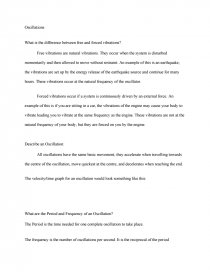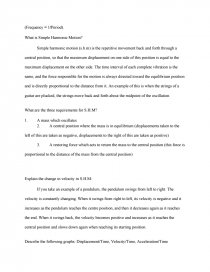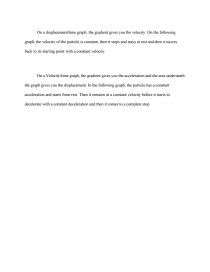Oscillatations
Essay by 24 • November 28, 2010 • 560 Words (3 Pages) • 1,038 Views
Oscillations
What is the difference between free and forced vibrations?
Free vibrations are natural vibrations. They occur when the system is disturbed momentarily and then allowed to move without restraint. An example of this is an earthquake; the vibrations are set up by the energy release of the earthquake source and continue for many hours. These vibrations occur at the natural frequency of the oscillator.
Forced vibrations occur if a system is continuously driven by an external force. An example of this is if you are sitting in a car, the vibrations of the engine may cause your body to vibrate leading you to vibrate at the same frequency as the engine. These vibrations are not at the natural frequency of your body, but they are forced on you by the engine.
Describe an Oscillation:
All oscillations have the same basic movement; they accelerate when travelling towards the centre of the oscillation, move quickest at the centre, and decelerates when reaching the end.
The velocity/time graph for an oscillation would look something like this:
What are the Period and Frequency of an Oscillation?
The Period is the time needed for one complete oscillation to take place.
The frequency is the number of oscillations per second. It is the reciprocal of the period (Frequency = 1/Period).
What is Simple Harmonic Motion?
Simple harmonic motion (s.h.m) is the repetitive movement back and forth through a central position, so that the maximum displacement on one side of this position is equal to the maximum displacement on the other side. The time interval of each complete vibration is the same, and the force responsible for the motion is always directed toward the equilibrium position and is directly proportional to the distance from it. An example of this is when the strings of a guitar are plucked, the strings move back and forth about the midpoint of the oscillation.
What are the three requirements for S.H.M?
1. A mass which oscillates
2. A central position where the mass is in equilibrium (displacements taken to the left of this are taken
...
...


